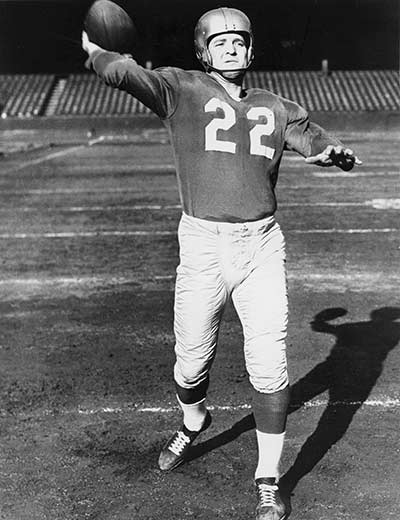“The Lions Roar in ’34: Build Championship Character”
6/18/2017
The Detroit Lions struggled for years to find an elite quarterback to lead the franchise like Hall of Famer Bobby Layne did during the 1950s. Football fans everywhere know what a talented signal caller can do for the fortunes of their favorite team. In the 2009 NFL Draft, the Lions selected Mathew Stafford first overall and have watched him develop into a legitimate franchise quarterback. However, if the Lions want to win their first NFL Championship since 1957, they may want to look toward the defensive side of the ball and call for the resurrection of the Lions’ record-setting 1934 defense.

As the old saying goes “defense wins championships,” and during the 1934 season the Lions looked to be well on their way to bringing their first-ever NFL championship to the city of Detroit. The defense put the team in great position by astonishly holding their first seven opponents scoreless.
The original “No Name Defense,” besides Hall of Fame quarterback Earl “Dutch” Clark, who also played safety as the last line of defense in Detroit’s 6-2-2-1 formation, the rest of the defenders were average in both size and talent. The Lions apparently didn’t run a fancy scheme either, just about everyone in the league played the same basic defense that season. The Lions just played it better than anyone else at that time.
By 1934, pro football’s revolution had begun and the game had emerged from the dark ages of three yards and a cloud of dust. Through my research, a few numbers illustrated the dominance of the Lions’ defense during their seven-game shutout streak. Detroit didn’t allow an opponent inside the 20-yard line, and gave up a total of 835 yards which is an average of just 119 yards per game, low even by the standards of that era.
The shutouts began on September 23 with a 9-0 victory against the defending Eastern Division and eventual NFL Champion New York Giants. They continued through September and all of October as the Lions defeated the Chicago Cardinals 6-0, Green Bay Packers 3-0, Philadelphia Eagles 10-0, Boston Redskins 24-0, Brooklyn Dodgers 28-0 and the Cincinnati Reds 38-0 (yes, those last two opponents were NFL teams not baseball clubs).
The streak finally ended on November 4 against the Pittsburgh Pirates (later renamed Steelers) on somewhat of a fluke play. The Pirates tried to catch the Lions off guard by faking a punt in the first quarter. Harp Vaughan took the snap and threw a pass to Muggsy Skladany. Dutch Clark was defending the play and in great position to intercept the pass, unfortunately for the Lions, Clark was unable to make the play resulting in a 62-yard touchdown pass, catch and run. Regardless, the Lions won the game 40-7. The Pirates only managed that one score, and Clark made amends for his missed open field play, by leading the Lions to a then-NFL team record 426 yards rushing.
At the time, the shutout streak garnered a lot of attention. Many felt the Lions were a lock to finish the season undefeated and take home their first NFL championship, but that was not the case. After winning their first 10 games, they finished with three straight losses, one to the Packers and two to the Chicago Bears, by a total of nine points. The Bears finished the ‘34 season undefeated at 13-0, won the Western Division and left the Detroit Lions at home disappointed while they played for the NFL championship. The Giants would go on to defeat the Bears 30-13.
The following season, despite the Lions finishing just 7-3-2 and their defense not creating nearly as many headlines, the team regrouped from their collapse the year before and brought Detroit its first NFL title with a 26-7 victory over the Giants. The Lions of 1935 were not defined by the disappointment of the previous season. They showed tremendous perseverance through adversity to realize their championship aspirations. Remember, the character developed through the struggles of defeat will ultimately open the doors of success if one continues to compete.
Go back to all blog listings

